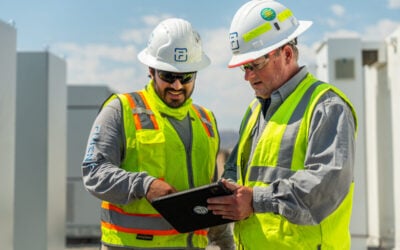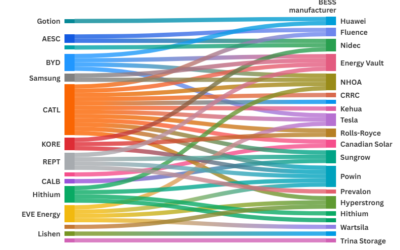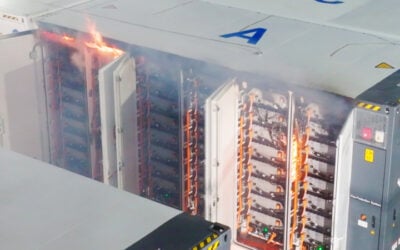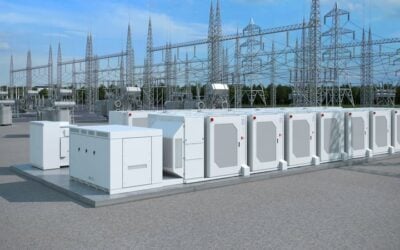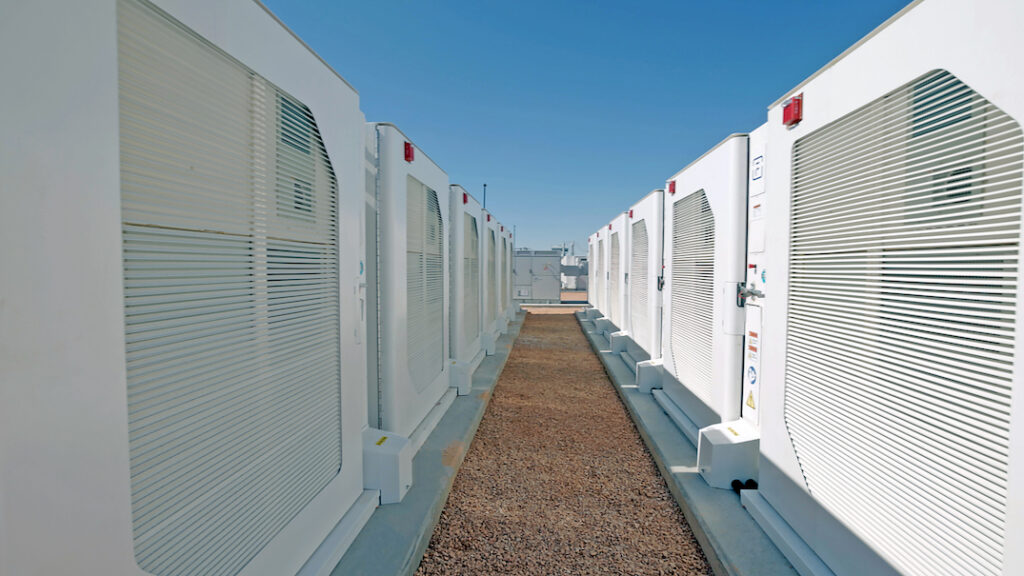
Large-scale fire testing of Fluence’s battery storage solution showed that thermal runaway in one ‘Cube’ would not spread fire to surrounding units.
The system integrator said last week that testing of its products against UL9540A – considered one of the main standards for energy storage safety – has been successfully completed.
Enjoy 12 months of exclusive analysis
- Regular insight and analysis of the industry’s biggest developments
- In-depth interviews with the industry’s leading figures
- Annual digital subscription to the PV Tech Power journal
- Discounts on Solar Media’s portfolio of events, in-person and virtual
Fluence’s sixth generation of products, launched in 2020 and currently used in all its projects globally, were put through the tests, assessing their ability to limit the spread of potential fire to subsystems without thermal runaway propagating from one to the next.
Fluence alluded to the Cube, which is the hardware building block of its Gridstack systems for large-scale utility use, having surpassed the safety testing requirements in independent testing conducted by international certification group DNV.
UL9540A doesn’t have a specific pass or fail criteria as such, but the tests, formulated in partnership with the US National Fire Protection Association (NFPA), are widely considered indicative of system and component adequacy for safety, and by extension bankability for customers looking to procure large-scale battery storage.
Increasing numbers of technology providers are publicly sharing their results, with UL itself hosting some – though not all – providers’ results on its own website.
“The results of Fluence’s large-scale fire test show that, in the unlikely event a Cube goes into thermal runaway, the product is designed to contain extreme internal battery failures to a single Cube and not spread through an energy storage system,” DNV business development leader Martin Plass said.
Plass described the test as “particularly impressive,” because full-scale fire in the originated Cube didn’t cause internal temperatures in surrounding units to reach levels high enough to cause thermal runaway, “even without intervention from external emergency personnel”.
That means if one Cube has problems like an internal short circuit caused by mechanical damage or even defective cells, the rest of the battery storage system can be restored to full operation safely, Fluence claimed.
Fire safety: a key priority for integrators and customers alike
Safety is of course a major focus for the battery storage industry, with several industry sources telling Energy-Storage.news at the Electrical Energy Storage Europe (ees Europe) event earlier this year that there is no bigger priority for its customers.
While fires are rare, there have been a number that have caused concern, and anecdotally it seems local community reluctance to host new utility-scale battery storage facilities focuses on the safety aspect of lithium-ion batteries.
Most people are willing to have lithium batteries in their pockets in their cellphones, or even in their ears in their earbuds and headphones, but nonetheless numerous newspaper reports emerge from places like the UK – where a 20MW battery energy storage system (BESS) burned out in 2020 – of groups of residents opposing larger scale systems in their local area.
One fire expert told Energy-Storage.news earlier this year that although fire safety is and should remain of utmost importance, often the general public and even academics unconnected with the industry are unaware that, for example, failures in large-scale energy storage are unlikely to cause the sort of explosive events that one high profile academic research report warned of.
Paul Rogers, a senior firefighter and energy storage safety subject matter expert at Energy Safety Response Group (ESRG), described the authors of that report as lacking understanding of what happens when failures occur at system level, in an interview published at the beginning of this year in our journal PV Tech Power.
Meanwhile, Paul Hayes, general manager of American Fire Technologies and a witness to Fluence’s testing, said that Fluence had taken “a significant step forward by performing this full large-scale installation-level fire and explosion test”.
“Few companies understand how energy storage systems will perform under a large-scale failure and how to help protect first responders during such an event,” Hayes said.
“The test did not result in a deflagration event and, even with a fully engaged Cube, the failure was limited to one Cube with no propagation between containers at distances below code requirements. This test will help define safety standards moving forward.”

